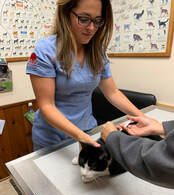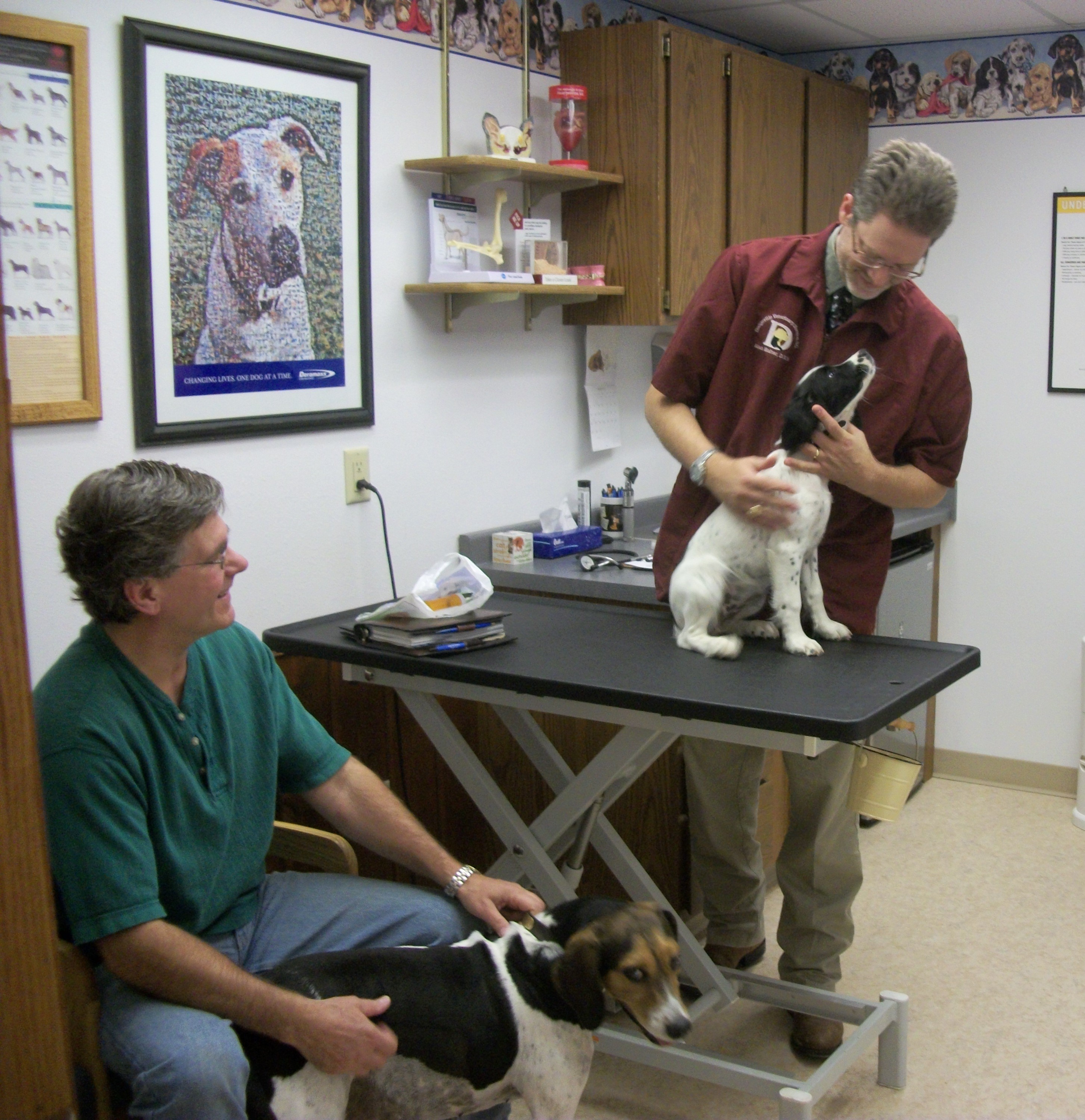This time of year we brighten our homes with all kinds of decor, lights, and festive plants. We cook rich meals and sweet desserts and family and friends fill our homes. It’s easy to lose track of our furry family members in the hustle and bustle of the season. However, it’s more important than ever to pay attention to what new dangers are within your pet’s reach and make sure they are safe this holiday season. Here are a few new dangers that may be around this time of year:
Poinsettias:
Most people have heard that poinsettias are extremely toxic and dangerous for our canine and feline friends. It is true that ingesting some of the plant can cause a lack of appetite or stomach upset for 1-2 days. However, surprisingly, it doesn’t normally need medical intervention unless lasting longer. No significant toxicity is typically seen or has been documented. The poisonous poinsettia is a myth.
(https://vcahospitals.com/know-your-pet/holiday-toxins-for-pets)
Lilies, holly, mistletoe:
Unlike poinsettias, lilies are very dangerous to our four-legged friends. One or two bites of lily can result in severe acute kidney failure in cats and the pollen and water the plant is in is also potentially toxic. Holly berries can cause severe GI upset due to the spiny leaves containing potentially toxic substances. American mistletoe is less toxic than European varieties. Mild GI signs can be seen but if large amounts are ingested it can cause collapse, hypotension, ataxia, seizures, and even death.
Tinsel and decorations:
Cats and dogs alike will see decorations and shiny new things in their environment and think Christmas has come with plenty of new toys for them and new toys immediately go in their mouths. Eating these can cause foreign body issues and blockages from ingestion. Usually needing surgical intervention.
Oils and potpourri:
The smells this time of year are wonderful and nostalgic. However, if a curious cat or canine decides it smells good enough to eat the repercussions could be very dangerous. Ingesting heated oils can cause serious chemical burns in the mouth, fever, difficulty breathing, and tremors in cats. Dogs have not been seen to be as sensitive but it’s better to be safe than sorry.
Grapes, raisins, and currants:
Grapes in all their varieties should not be given to dogs. They have been found to be toxic and can cause acute kidney failure. Signs of toxin ingestion can include:
- Lethargy
- Loss of appetite
- Vomiting and/or diarrhea (usually within an hour or two)
- Abdominal pain (tender to the touch)
- Dehydration (dry nose, pail/tacky gums)
- Increased thirst and urinating
Chocolate and cocoa:
Chocolate and cocoa contain theobromine which is similar to caffeine and toxic to cats and dogs. The darker the chocolate (higher the cocoa content) the more theobromine is in the sweet. Ingesting this can cause vomiting and diarrhea, seizures and heart arrhythmias.
Sugarless gums and candies:
Many sugarless gums and candies contain xylitol which is toxic to dogs. Ingestion of xylitol causes a life-threatening drop in blood sugar and liver failure.
Ice melt:
With slippery sidewalks and roads prevalent in the winter months more ice melting and salt is spread. Ingesting the salt-based products can cause an upset stomach and external exposure can cause dermal/paw pad irritation. Large amounts can cause electrolyte abnormalities due to the sodium content and result in seizures and brain damage.
Antifreeze:
Antifreeze is found more readily in winter months in places we expect like cabins to keep pipes from freezing and others that we may not, such as in some imported snow globes. Ingesting just 1 tsp for cats and 1-2 tbsp for dogs can be fatal. Early signs of ingestion include acting drunk and uncoordinated, excessive thirst, and lethargy. Ultimately this leads to acute kidney failure.
Alcohol:
While inviting Fluffy or Fido to join in the party might sound like a good idea, it could have a dangerous outcome. Alcohol can cause seizures, kidney and liver damage.
So be aware of what your sneaky, furry friends can reach this holiday season. If you notice any of the signs mentioned above or suspect they got into something toxic contact your veterinarian right away. Let’s all have a happy holiday!




Recent Comments